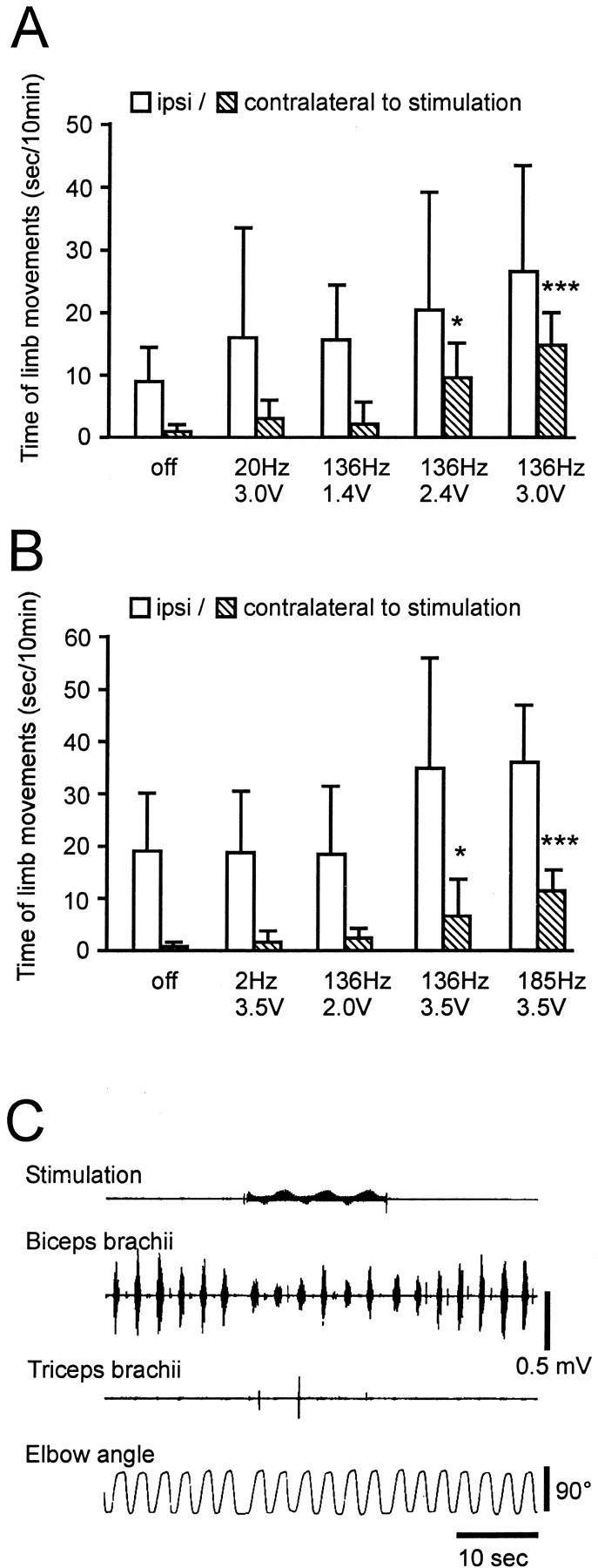Fig. 2.

Effect of STN stimulation on movement and rigidity. The total movement time of the limbs was measured by raters blinded to the experimental condition (S.P. and M.O.) from seven recordings for each stimulation condition. Without stimulation, the monkeys sat quietly with little movement of the extremities (bradykinesia) on the side contralateral to the MPTP injection. Stimulation at 136 Hz was associated with increased movement on both sides in monkey R7160 (A) and monkey R370 (B). Increases in movement time were larger on the side contralateral to STN stimulation in both monkeys (right side in R7160, left side in R370). Asterisks indicate a significant difference in the on versus off stimulation condition: *p < 0.05, ***p < 0.001; apost hoc analysis (Tukey's honestly significant difference). C, Stimulation at 136 Hz, 3.0 V (top, stimulation signals recorded from the chamber) reduced biceps brachii EMGs (second trace, surface EMGs) induced by manual elbow extension (bottom trace) in monkey R370.
